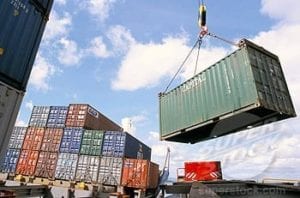What is the rationale behind the TPT approach to SOLAS?
TPT approach to SOLAS was informed by the IMO guideline MSC.1/circ 1475, the SAMSA marine notice MN 5 2015 as well as TPT’s current export gate process ‒ pre-advice. Who is responsible for providing the verified gross mass (VGM) for containers? The IMO guidelines are clear that the shipper is responsible for providing the VGM sufficiently in advance of loading the container aboard a vessel. For this reason, together with the high throughput nature of the TPT container facilities, TPT will not weigh containers at the coastal terminals. How will TPT facilitate the submission of the VGM? The existing process at TPT is the pre-advice of container exports prior to gate entry into any TPT terminal. To comply with SOLAS, the existing pre-advice fields will be amended in NAVIS and new fields will have to be developed. The fields will be mandatory and will be aligned to the operational principles, which guide the existing pre-advice process. Additional fields required in NAVIS:- Verified gross mass
- Method
- SAMSA Accreditation number (where method 2 is utilised)
- Designated person
information. A new CTO which provides for the additional information requirements will be circulated in April 2016 and will replace the current
CTO (last updated 25/03/2009). When should the VGM be declared to TPT? In line with the current pre-advice process, which requires the provision of weight (among other data) prior to any truck gaining entry to the terminal, the SOLAS VGM fields will be mandatory. For rail containers, the pre-advise process will also remain as is. The source data received from rail customers will include the SOLAS VGM fields, Transnet Freight Rail will electronically pass this on to TPT as per the current process via the rail pre-advise process before the train arrives at TPT. Our position is to retain our current business processes which require valid and complete pre-advised export containers PRIOR to entry at the terminal gate
Who will enforce this SOLAS regulation?
The South African Maritime Safety Authority (SAMSA) is the competent authority of the state mandated to enforce the regulation. SAMSA have already indicated that they can at any time request to audit this new process post 1 July. How will TPT implement SOLAS with customers via EDI? A SOLAS compliant version of NAVIS will be implemented following the NAVIS upgrade in May 2016. Testing of the EDI messages with individual shipping lines, however, will begin in April and continue until full compliance is achieved prior to 1 July 2016. What about non-EDI stakeholders who pre-advice on behalf of shipping lines? There are a number of stakeholders who pre-advise export containers on behalf of shipping lines. In light of the new input requirements for pre-advice, a list of users will be submitted for review to all TPT customers for the purpose of assessing user access validity at all our NAVIS terminals. This process will be managed through the key accounts representative at each terminal. Will TPT conduct training on the new pre-advice screen once developed? Once the new ‘front end’ manual pre-advice screen has been developed there will be training sessions held for users. The dates will be communicated in late May 2016. How has TPT been communicating this information to stakeholders? Since September 2015, TPT has held bilateral engagements with various stakeholders to communicate the TPT position on SOLAS and provide project updates. In addition, TPT has participated at all the national SAMSA industry workshops, the National Port Consultative Committee, posted web and social media statements and distributed letters to our customers.







